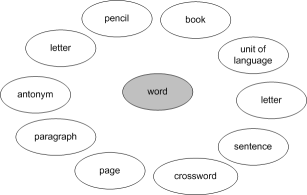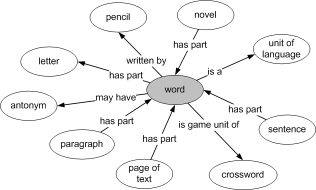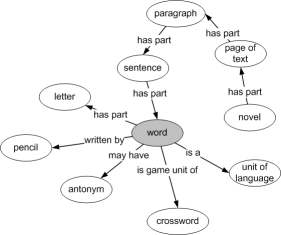Summary
Our problem solving mind and its limits
We can solve problems because we can recall things from memory. Our problem solving mind has two types of memory: short-term and long-term memories. Short-term memory is a relatively small, ephemeral information holder for processing. It can only hold 5-9 unrelated pieces of information. Anything we do and remember is in the short-term memory. Anything we think about is also in the short-term memory. Long-term memory is a place where knowledge about things is permanently stored. It can hold two types of information: information about what things are, this is called declarative knowledge, and information about how to do things, or procedural knowledge. Information in the long-term memory is in the form of concepts. Concepts are chunks of related facts about things. Concepts themselves are linked to each other through relationships called schemata.
“ Car is a concept that's linked to concepts such as passenger, engine, radio, speed, accident, etc. ”
When we think about a car concept, our mind loads related information from long-term memory to short-term memory. But as we mentioned, short-term memory can only hold 5-9 concepts at a time. This limit can be demonstrated by trying to look at a collection of unrelated objects for a few seconds, then look away and try to remember as many objects as we could. Most people can remember somewhere between 5 to 9 objects. We use external assistance to help our mind to map a larger number of concepts which in turn help us solve complex problems.
Diagrammatical representations
To assist their mind, engineers represent problem designs diagrammatically with which they can expand the limits of the short-term memory. Below are some diagrammatical methods from which we explain ‘concept maps’ in details:
- system-subsystem representation
- concept maps
- mind maps
- flowcharts
Concept maps
One way to assist our mind to map a larger number of concepts is by using concept maps. A concept map is a network of concepts built around a central concept.
Steps in drawing concept maps:
1 Define the central concept around which the related concepts are drawn. This can be a question such as ‘what is x?’. Gather and prepare all available relevant sources of information such as text books, lecture notes, etc. Decide where to draw the map; it is recommended to use a piece of software such as Microsoft Visio or CmapTools.
Key points to remember:
- the definition or the title of the domain has to be short. Example: what is a word?
2 Draw or list around 10 concepts that are directly or indirectly related to the central concept. First try to recollect concepts from memory. If you have ran out of concepts, then, use external sources such as highlights from lecture notes or text books.
 |
| First stage concept map of 'word' |
Key points to remember:
- Naming the concepts has to be as short as possible. Long names might indicate multi concepts. Examples (if word was central concept): {letter, pencil, novel, antonym, cross-word, sentence, paragraph, page of text, unit of language }
- Long definitions or names should be separated or otherwise they should be re-defined as a unified concept.
3 You should now have a chunk of concepts round a domain known as central concept. Next, add the initial relationships between the central concept and the rest of the concepts. First you should try to add the relationships from your own memory then use other, external sources. Ask, what links or connects a particular concept to the central concept?
 |
| Second stage concept map of 'word' |
Key points to remember:
- Naming or labelling the relationships should be as short as possible. Long labels might indicate poor understanding of the subject in question. Examples of relationships: {is a, has part, made of, composed of, include, studied at, spoken by, is an application of, illustrate, demonstrate,}
- Don’t link concepts with ambiguous or dubious labels such as ‘affected by’. In which way it is ‘affected by’ and what kind of ‘affect’. Relationships have to be clear and make sense.
4 Rearrange the concepts into chunks or groups that have closer relationships. This is where you should apply structural and class hierarchies if possible. To separate and enclose a chunk of concepts sometimes require their own central concepts or a concepts under which they can be listed.
 |
| Third stage concept map of 'word' |
5 By now, you should have chunks or groups of concepts that are linked to a domain or a central concept. It is time to add what’s called cross-links between as many concepts as possible. Cross-links or cross-relationships are between the concepts that are listed around the domain.
return top